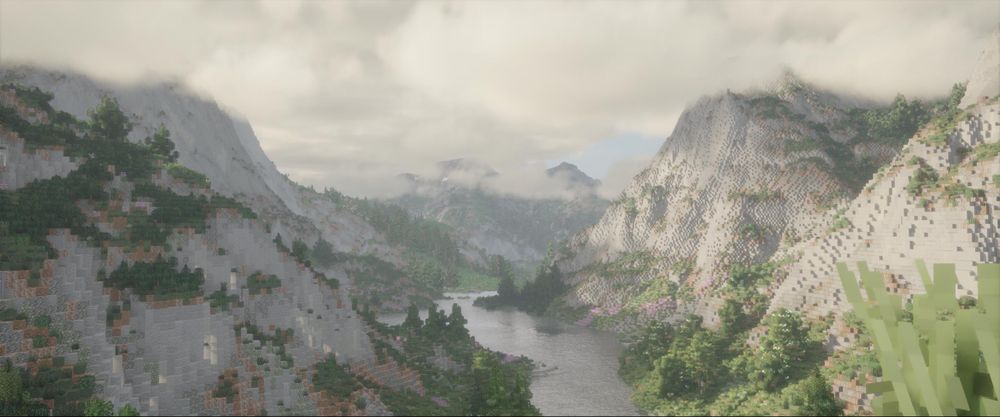Original post on mastodon.thi.ng
"Thats not to say there haven’t been growing pains. When a great steak comes out of the microwave I get really excited. But more than half the steaks that come out of the microwave get sent back by the customer. To solve this problem I now run ten microwaves in parallel cooking ten steaks. One […]
05.08.2025 11:33 — 👍 0 🔁 1 💬 1 📌 0

Open Scanner
Open Scanner is an open-source document scanning app for iPhone
Finally found a great ad-free and tracking-free #OpenSource document scanner for iOS, with OCR and multi-page PDF output:
https://openscanner.app/
04.08.2025 15:27 — 👍 1 🔁 2 💬 0 📌 0
Original post on mastodon.thi.ng
Reflecting some more on the Sketchpad & ECS parts of this talk: SideFX Houdini organizes all geometry data in similar vertical silos of points, vertices, edges, faces, prims, each with component IDs, each with its own group of native and user-defined attribs, and with similar powerful […]
04.08.2025 08:48 — 👍 1 🔁 0 💬 0 📌 0
Btw. Since it heavily features towards the end of Casey's talk, to save some time for anyone interested in Ivan Sutherland's seminal thesis about #Sketchpad, the PDF is available here:
https://www.cl.cam.ac.uk/techreports/UCAM-CL-TR-574.pdf
03.08.2025 16:14 — 👍 0 🔁 1 💬 0 📌 0
Watching "The Big OOPs", new 1h50m talk by Casey Muratori about the mistakes & shortcomings of OOP and better/alternative ways forward...
https://www.youtube.com/watch?v=wo84LFzx5nI
(Also very interesting for some #PermaComputing & KISS aspects)
#SoftwareArchitecture #ECS #DOD
03.08.2025 14:30 — 👍 0 🔁 2 💬 2 📌 0
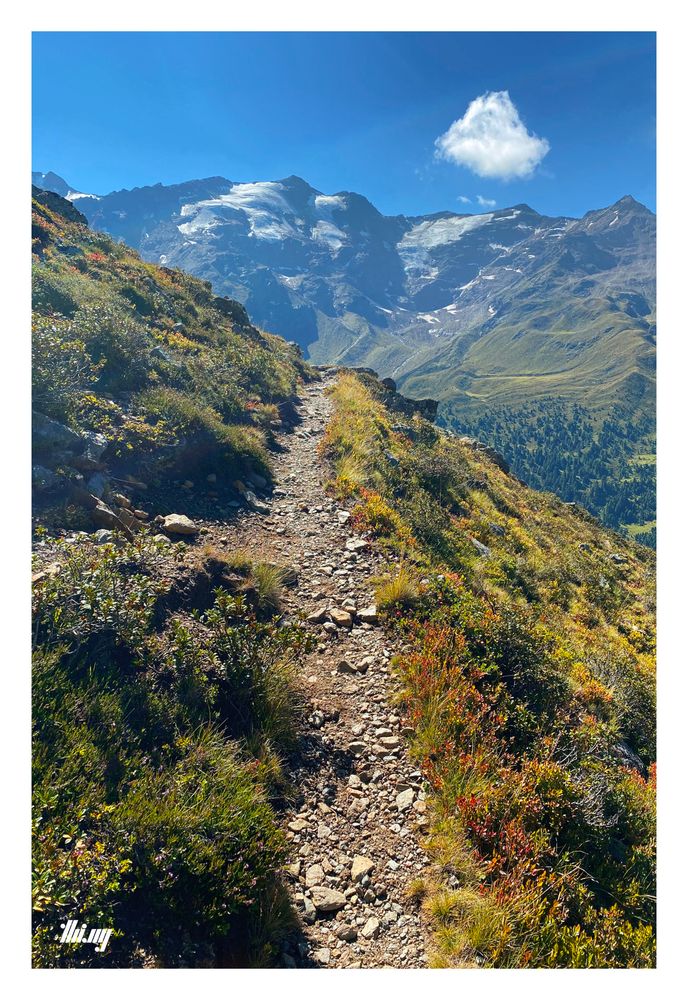
A small hiking path leads through beautiful colored mountain meadows into the distance, high above the valley below. The peaks on other side of the valley have remnants of glacier tongues. Further down, green meadows and first generation larch forest growing, for the first time in thousands of years. A single small fluffy cloud in an otherwise clear blue, hazy sky.
Needing more paths in more lives to be as beautiful as this...
(This hike & experiences further up touched me like not many others have...)
#LandscapePhotography #Photography #Alps #Mountains #Hiking
03.08.2025 10:12 — 👍 5 🔁 0 💬 0 📌 0
Original post on mastodon.thi.ng
The scale of investment and the involvement of governments means ROI must be found (or rather created) now, by any means necessary! Demand already is being forcefully created to justify these expenditures. Business models are pivoted in lockstep. Aside from all the conceptual, ethical and […]
03.08.2025 08:21 — 👍 0 🔁 1 💬 0 📌 0
Original post on mastodon.thi.ng
An oldie, but goldie for this rainy Saturday — once going, the deep floating perma strings, hypnotic main sequence, the drops and later some minimal 303 accents add some twist/interestingness to some otherwise fairly standard deep house...
Nhar - Wisdom (2010) […]
02.08.2025 16:30 — 👍 0 🔁 0 💬 0 📌 0
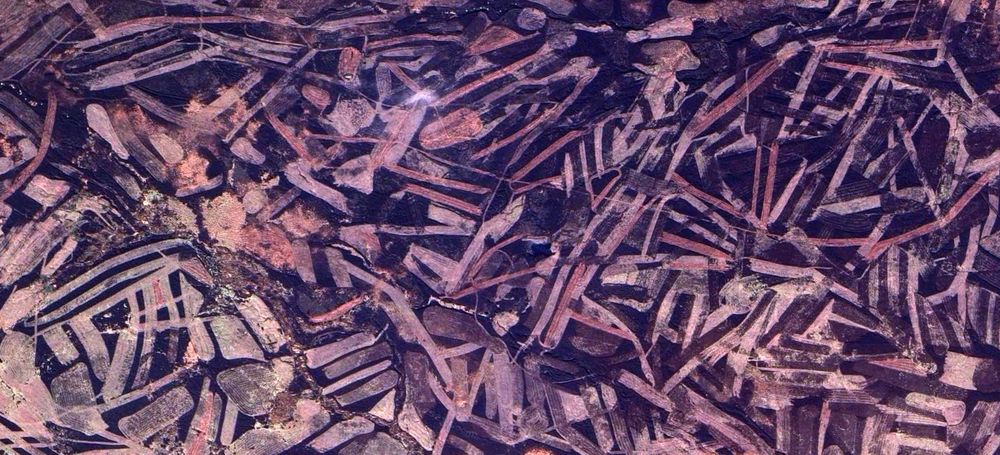
Detail satellite view from Google Maps of a section of the Peak District, showing complex traces of (presumably) some form of farming activity, reminiscent of an abstract painting.
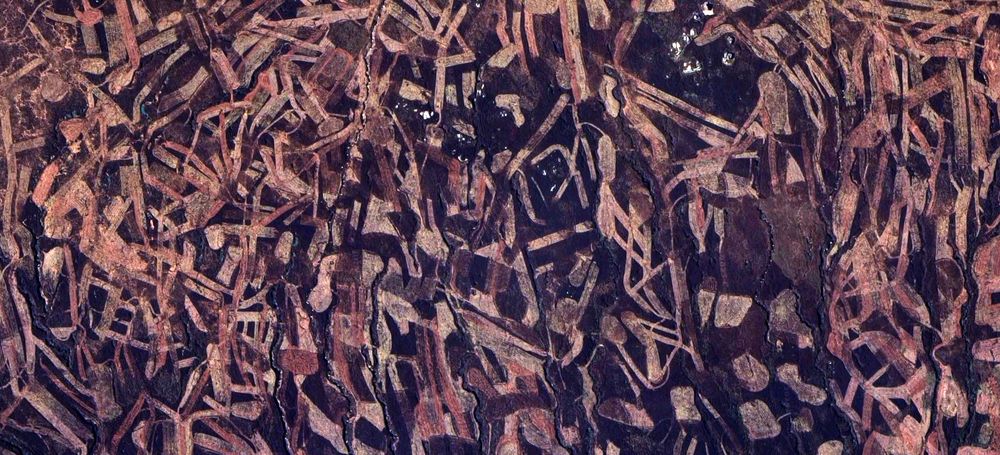
Detail satellite view from Google Maps of a section of the Peak District, showing complex traces of (presumably) some form of farming activity, reminiscent of an abstract painting.
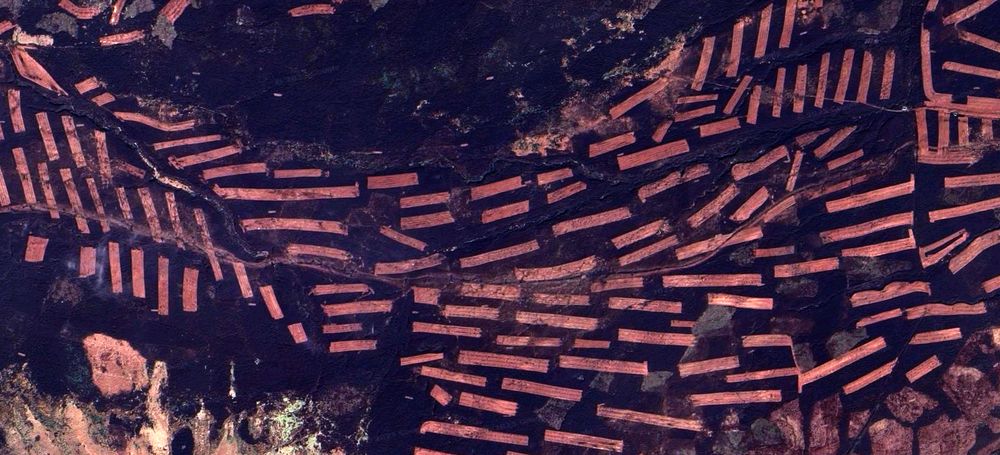
Detail satellite view from Google Maps of a section of the Peak District, showing complex traces of (presumably) some form of farming activity, reminiscent of an abstract painting with geometric shapes.
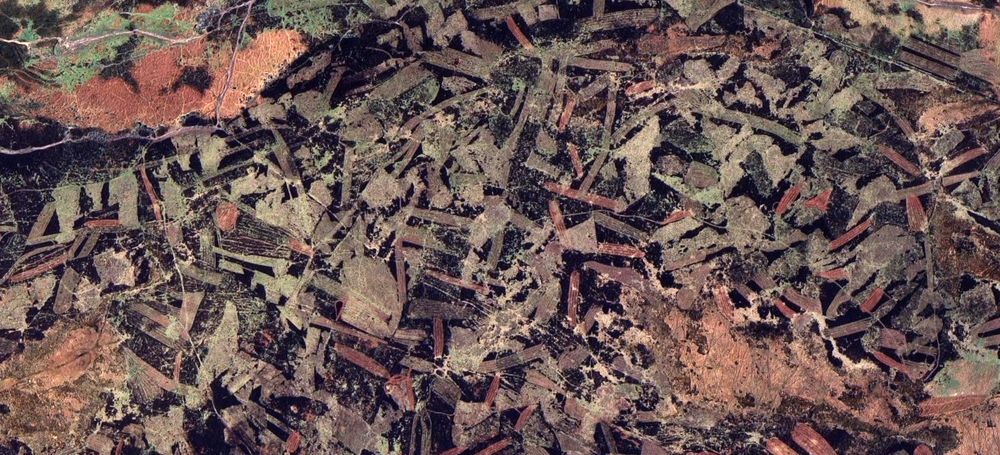
Detail satellite view from Google Maps of a section of the Peak District, showing complex traces of (presumably) some form of farming activity, reminiscent of an abstract painting of shapes & textures.
Even though I've been there quite a few times, I never realized that large swathes of the UK's Peak District look like a series of abstract paintings in satellite view...
Are those traces of turf harvesting?
#MapSurfing #PeakDistrict #Abstract #Landscape
02.08.2025 10:54 — 👍 1 🔁 1 💬 0 📌 0
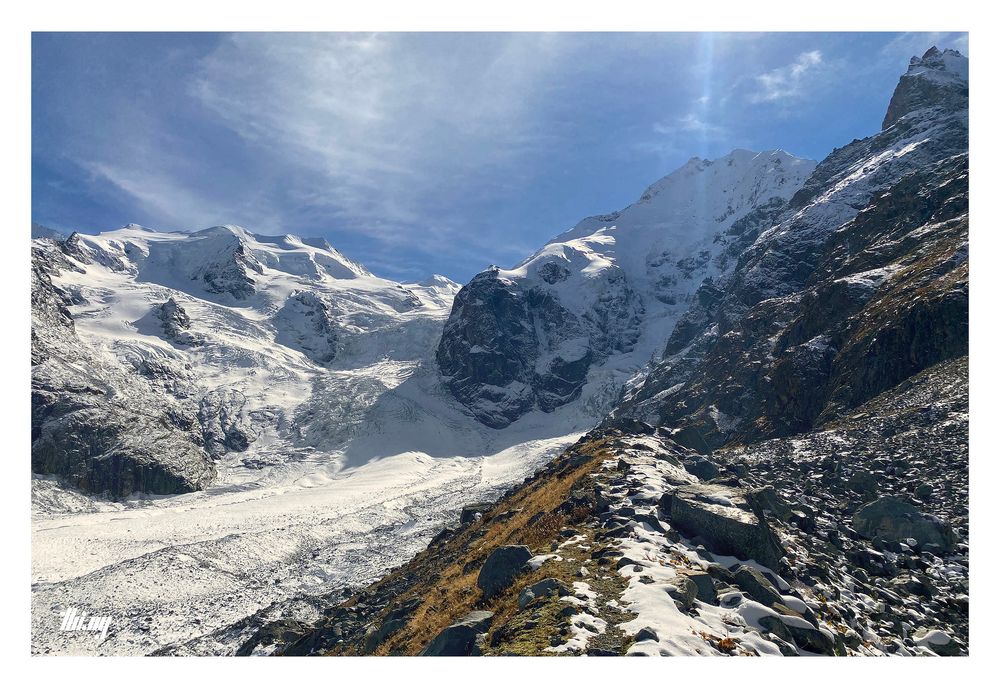
A glacier side moraine with an almost imperceptible path on its ridge is leading into a sea of ice, rocks and snow in the not so far distance. The massive glacier is just a few dozen meters below from where the picture was taken. It flows & drops down from the peaks in the back (all ~4000m and around 1300m higher up for my position), forming a maze of large seracs on the way. Sunny day with blue sky and some wispy clouds.
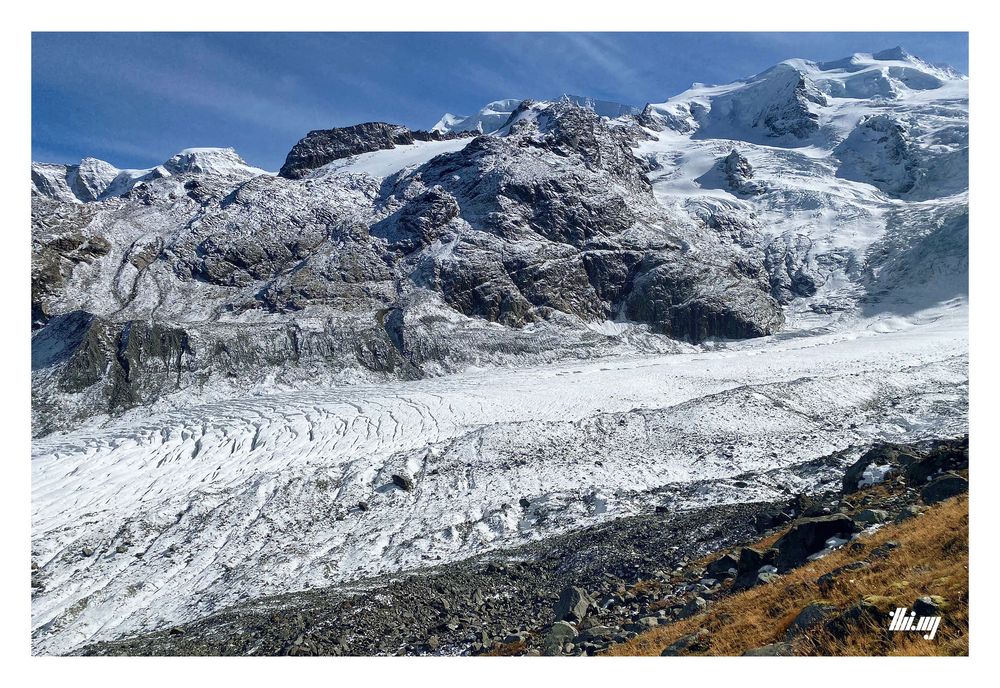
View across a large glacier (from the same moraine & position as other photo) towards the opposite side of the valley with its 4000m peaks, hidden below a thick layer of snow and ice, some side glaciers and bare major rock faces dusted in snow. Some dried brown grass in the bottom-right corner.
Out & about in the Bernina Range, on our way to the Labyrinth, surrounded by majestic 4000ers (meters)... A dream! 😍
(#ThrowbackThursday, preemptive #FootpathFriday and my personal hiking highlight of 2024)
31.07.2025 16:24 — 👍 1 🔁 0 💬 0 📌 0

Photo of the waxing crescent moon with Mare Serenitatis, Mare Tranquillitatis and many smaller craters clearly visible...
The moon last night, exactly 12h ago...
(Canon R7, 400mm, f8, 1/125s)
#Moon #AstroPhotography #BlackAndWhite
01.08.2025 06:43 — 👍 8 🔁 2 💬 0 📌 0

A glacier side moraine with an almost imperceptible path on its ridge is leading into a sea of ice, rocks and snow in the not so far distance. The massive glacier is just a few dozen meters below from where the picture was taken. It flows & drops down from the peaks in the back (all ~4000m and around 1300m higher up for my position), forming a maze of large seracs on the way. Sunny day with blue sky and some wispy clouds.

View across a large glacier (from the same moraine & position as other photo) towards the opposite side of the valley with its 4000m peaks, hidden below a thick layer of snow and ice, some side glaciers and bare major rock faces dusted in snow. Some dried brown grass in the bottom-right corner.
Out & about in the Bernina Range, on our way to the Labyrinth, surrounded by majestic 4000ers (meters)... A dream! 😍
(#ThrowbackThursday, preemptive #FootpathFriday and my personal hiking highlight of 2024)
31.07.2025 16:24 — 👍 1 🔁 0 💬 0 📌 0
Original post on mastodon.thi.ng
TIL about the Barnum effect: "[...]a common psychological phenomenon whereby individuals give high accuracy ratings to descriptions of their personality that supposedly are tailored specifically to them, yet which are in fact vague and general enough to apply to a broad range of people. This […]
31.07.2025 15:15 — 👍 0 🔁 2 💬 0 📌 0

Screenshot of the linked gradient generator tool showing a RGB visualization of the contributing cosine waveforms, the generated gradient and the set of 16 sliders to control various parameters. At the bottom of the image are text boxes with param outputs and code snippets.
Just learned that my little visual cosine gradient generator tool is featured in this popular video tutorial (1.1M+ views) about artistic shader programming:
https://youtu.be/f4s1h2YETNY?t=971
The tool is still here:
https://dev.thi.ng/gradients/
If you […]
[Original post on mastodon.thi.ng]
31.07.2025 07:27 — 👍 3 🔁 0 💬 0 📌 0
The Life We Choose... (if only)
What a track and E.R.P. using his skills to elevate it even more in this remix! Goosebumps, esp. once the pads come in!
Hardfloor - "The Life We Choose" (E.R.P. Remix, 2018)
https://www.youtube.com/watch?v=1LQF8npb65o
#Music4Coding #303 #Hardfloor #ERP
29.07.2025 08:31 — 👍 0 🔁 0 💬 0 📌 0
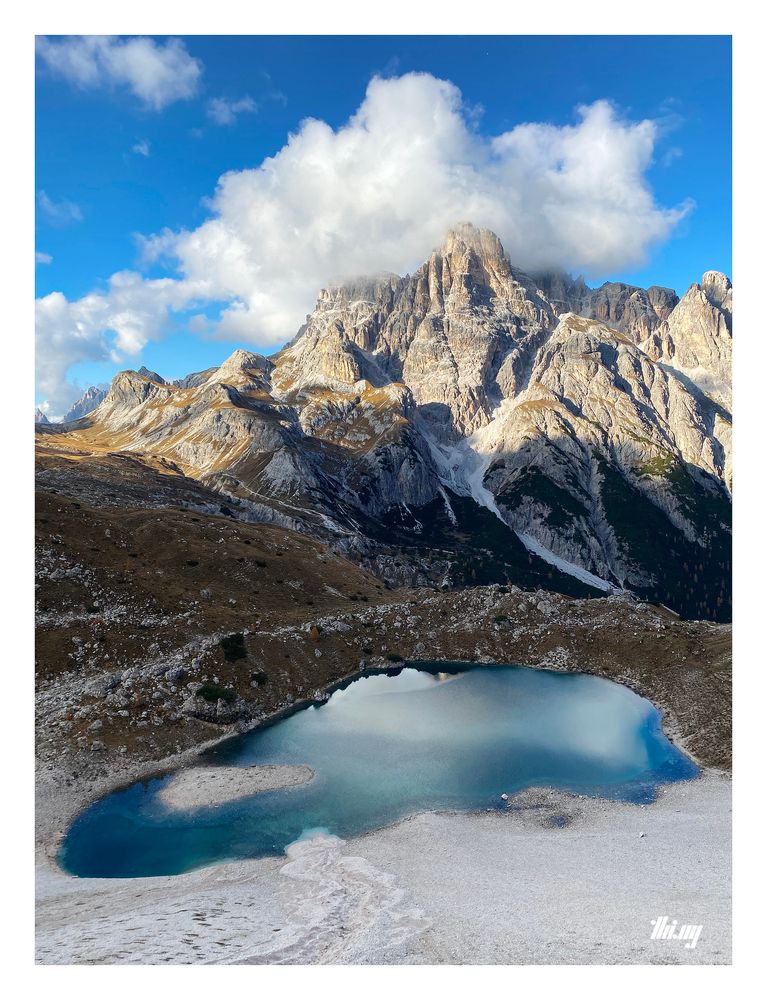
A small, shallow high alpine lake with clear royal blue water surrounded by a talus field of white sands/pebbles, located on a high plateau with autumn colored grasses in front of the large mountain massif of Crodon di San Candido. A big fluffy cloud is nestled around the mountain peaks. Otherwise beautiful blue sky.
My favorite blues and snow white sands near Crodon di San Candido (October 2024)
#SilentSunday #LandscapePhotography #Photography #Dolomites #Mountains #Lake #Hiking
27.07.2025 12:08 — 👍 55 🔁 1 💬 1 📌 0
Original post on mastodon.thi.ng
A massive shout out and gratitude to @brandtryan for being a superstar and manually reviewing and comparing the expected outputs of the hundreds of code examples & snippets included in the readmes and documentation of the #ThingUmbrella repo. Over the past weeks he submitted dozens of issues […]
27.07.2025 10:40 — 👍 1 🔁 1 💬 0 📌 0
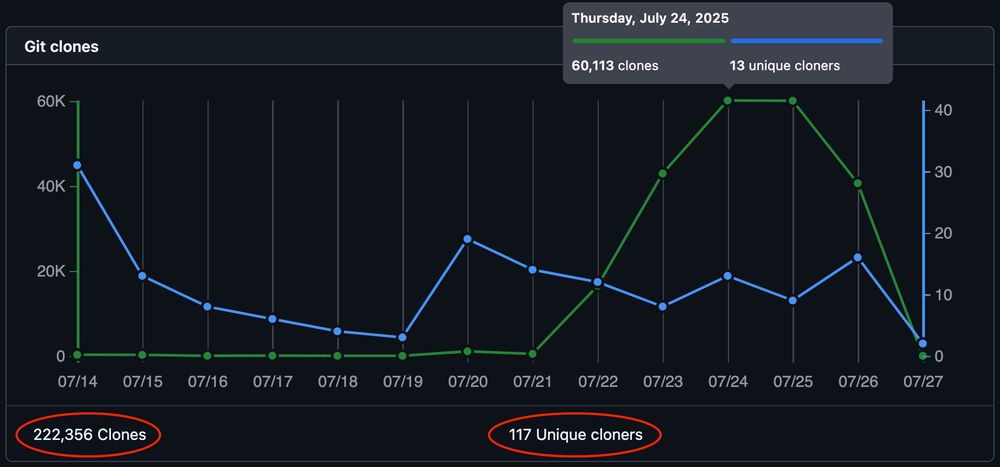
Screenshot of a Github activity line plot showing the number of daily clones per day over the past 14 days. In the past week the number of daily clones went up to 60k+ for 2 days, with the total number of clones for the entire timespan 222,356 with only 117 unique cloners.
Anyone else getting these ridiculous repo scraping spikes? A clean checkout of the https://thi.ng/umbrella monorepo is ~370MB. Over the past 14 days there were 222k clones (only 117 unique) of this repo which have caused downloads of a whopping ~78TB. WTF! 🤯 […]
[Original post on mastodon.thi.ng]
27.07.2025 09:27 — 👍 1 🔁 1 💬 0 📌 0
@atomless Yourself and many others absolutely "deserve" to be mentioned here, and elsewhere! I tried to not overwhelm with long lists in this one post, but will keep on sharing more in due course... 🙏🙇♂️
25.07.2025 19:19 — 👍 0 🔁 0 💬 0 📌 0
Alone[1] enjoying the peace & quiet at the end of the valley, in the cirque below The Great Wall (Grubenkarspitze, Karwendel)...
[1] Alone, apart from some adders in the grass...
#FootpathFriday #LandscapePhotography #Alps #Hiking
25.07.2025 15:01 — 👍 0 🔁 1 💬 0 📌 0
Original post on mastodon.thi.ng
Weekend list of critical reading links about the state[1] of Tech, AI[2] hype/finance/politics, mostly long form:
Ed Zitron's The Hater's Guide To The AI Bubble
https://www.wheresyoured.at/the-haters-gui/
How to use computing power faster: on the weird economics of semiconductors and GenAI (by […]
25.07.2025 11:06 — 👍 1 🔁 6 💬 1 📌 0
Just the right energy for getting through today: Heavy, driving beats, abstract sequences, stabs, bleeps, slowly emerging background layers & space, great arc...
Mønic - Blood Hound (2014)
https://www.youtube.com/watch?v=sI_z5KCmdHU
#Music4Coding
24.07.2025 09:34 — 👍 0 🔁 0 💬 0 📌 0

Each year in early March, when summer turns to fall in the Southern Hemisphere, New Zealand glaciologists gather at an airfield in Queenstown to embark on a predawn flight along the spine of the Southern Alps.
For hours, they twist in the Cessna’s narrow seats to train cameras on glaciers clinging to mountaintops. The images capture the glaciers’ vanishing contours and the shifting snowline—the demarcation between the remains of the winter snowpack and exposed glacial ice.
“It’s like a bank account,” said Andrew Lorrey, a climate scientist at the National Institute of Water and Atmospheric Research who has been coordinating the surveys for 16 years. “If we put in the same amount of snow in winter as we’re taking out in summer, the glacier would be in balance, melting at its terminus but advancing downhill due to gravity and replenishing the ice that’s lost.”
But the surveys, which have been running since 1977, show that summer melt now far exceeds winter snowfall and “we’re seeing the glaciers’ terminus and sides, the whole body, diminishing.”
New Zealand has lost more than a third of its glacial ice and the archipelago ranks third globally—after central Europe and the Caucasus—in the proportion of ice lost to rising temperatures, according to findings published in _Nature_ by the first comprehensive global Glacier Mass Balance Intercomparison Exercise (GlaMBIE).
## This newsletter rocks.
Get the most fascinating science news stories of the week in your inbox every Friday.
Sign up now
### Global Assessment of Glacial Retreat
The project assessed observations from 35 international teams, with a goal of reconciling all methods used to track glacial mass changes. These methodologies range from in situ measurements (in which scientists stud individual glaciers with ablation stakes to record their shrinkage) to various satellite-borne sensors (which use optical, radar, laser, and gravimetry technologies to track changes in glacial surface elevation).
Bringing all these methodologies together, the GlaMBIE team produced a time series of global glacial mass change between 2000 and 2023, showing that collectively, the world’s glaciers lost 5% of their total volume. “This may not seem much,” said Michael Zemp, GlaMBIE project leader and director of the World Glacier Monitoring Service at the University of Zürich. But it means an annual global loss of 273 billion tonnes (301 billion tons) of ice.
> “The ice lost each year amounts to the water intake of the entire global population in 30 years.”
“To put this in perspective,” Zemp said, “the ice lost each year amounts to the water intake of the entire global population in 30 years, assuming 3 liters per person a day.”
Andrew Shepherd, an Earth scientist at Northumbria University who was not involved in this project but has led a similar assessment of mass loss from polar ice sheets, welcomed the authoritative standardized framework provided by GlaMBIE.
Reconciling the different methodologies is important because “climate change isn’t smooth,” Shepherd said. Short-term in situ measurements can deliver contrasting results and each satellite technique has its strengths and weaknesses, but “bringing all methods together leads to a clearer picture of total ice loss,” he noted.
Although all areas experienced ice loss, the GlaMBIE results show significant differences between regions, ranging from 1.5% ice loss in the Antarctic to 39% in central Europe.
This map displays glacier mass changes from 2000 to 2023 as percentage loss (red slice in the pie chart) based on total glacier mass in 2000 (size of the pie chart). The colored stripes under each pie chart represent annual specific mass changes (in meter water equivalent) for a combined estimate (indicated with an asterisk) together with combined results from digital elevation model differencing and glaciological observations (Dg), altimetry (A), and gravimetry (G). Regional results are represented for hydrological years, that is, running from 1 October to 30 September in the Northern Hemisphere, 1 April to 31 March in the Southern Hemisphere, and over the calendar year in the low latitudes. Global results are aggregated for calendar years. Credit: The GlaMBIE Team. Community estimate of global glacier mass changes from 2000 to 2023. Credit: The GlaMBIE Team, 2025, https://doi.org/10.1038/s41586-024-08545-z
The largest overall contribution to ice loss (22%) comes from Alaska, said Caitlyn Florentine, a research physical scientist with the U.S. Geological Survey in Bozeman, Mont., and a GlaMBIE member.
Alaska, like the Canadian Arctic and Greenland, has enormous volumes of ice. But the relatively low elevation and latitude of Alaskan glaciers meant that these ice fields “were the biggest contributor to sea level rise [from glaciers] in the first 2 decades of this century and are projected to continue [to be] until 2100,” Florentine explained.
> “Every centimeter of sea level rise exposes another 2 million people to annual flooding somewhere on our planet.”
The GlaMBIE results also revealed clear evidence of increasing melt rates, with a 36% jump during the second half of the study period, from 2012 to 2023. Mountain glaciers hold enough water to raise sea level by 32 centimeters if all were to melt. The ice that has already been lost from the world’s mountains has contributed 18% more to sea level rise than the loss from the Greenland Ice Sheet and more than twice the loss from the Antarctic Ice Sheet.
“Even small amounts of sea level rise matter, because it leads to more frequent coastal flooding,” Shepherd said. “Every centimeter of sea level rise exposes another 2 million people to annual flooding somewhere on our planet.”
Zemp hopes to focus future work on assessing how glacier melt affects seasonal runoff, and that requires ongoing access to satellite data and higher-resolution remote sensing techniques. As some satellites and sensors approach the end of their missions, he’s concerned about continuing the study. “If we are left without open access to high-resolution stereo imaging missions with a global coverage, we’d be blind to these changes,” he said.
### Gone This Century
In addition to the ice sheets in Antarctica and Greenland, there are more than 275,000 glaciers—or crystal cones, as Zemp calls them—in mountain ranges from the tropics to the polar regions. Only about 500 are monitored up close.
One is Brewster Glacier in New Zealand, which Te Herenga Waka–Victoria University of Wellington glaciologist Lauren Vargo visits regularly. She drills ablation stakes into the ice in spring and retrieves their exposed parts in fall. In the 8 years between 2016 and 2024, she’s helped document that the glacier has shrunk by 24% and lost 17 meters in height.
New Zealand’s Brewster Glacier has shrunk by 24% in the 8 years between 2016 and 2024. Credit: Lauren Vargo
The retreat made Vargo’s latest visit, in March, physically taxing, she said. “The more melt that happens, the more stakes you have to collect,” she explained. “I don’t think I could have carried any more stakes.”
Many glaciers will not survive this century, Zemp said. Among these is one of his favorites, Oberaargletscher at Grimselpass in Switzerland, which Zemp has studied for almost a quarter of a century and, more recently, began visiting with his sons.
Oberaargletscher will be gone by 2050, regardless of any cuts to carbon emissions, Zemp said. While the retreat is “interesting to witness as a scientist,” he continued, “I am deeply sad that my sons and their generation will lose this fantastic glacier.”
—Veronika Meduna (@veronikameduna.bsky.social), Science Writer
##### **Citation:** Meduna, V. (2025), First global comparison of glacier mass change: They’re all melting, and fast, _Eos, 106,_https://doi.org/10.1029/2025EO250141. Published on 15 April 2025.
###### Text © 2025. The authors. CC BY-NC-ND 3.0
Except where otherwise noted, images are subject to copyright. Any reuse without express permission from the copyright owner is prohibited.
### _Related_
The first global comparison of glacier mass change reveals a global loss of 273 billion tonnes per year, an amount equivalent to what the entire human population on Earth drinks in 30 years.
https://eos.org/articles/first-global-comparison-of-glacier-mass-change-theyre-all-melting-and-fast
23.07.2025 22:52 — 👍 1 🔁 19 💬 0 📌 0
Live performance of "All Those Moments", a recent beautiful track by OORA with quite a great arc/evolution, full of analog sequences and layers...
https://www.youtube.com/watch?v=1MOp69-uum0
#Music4Coding
20.07.2025 12:07 — 👍 0 🔁 0 💬 0 📌 0
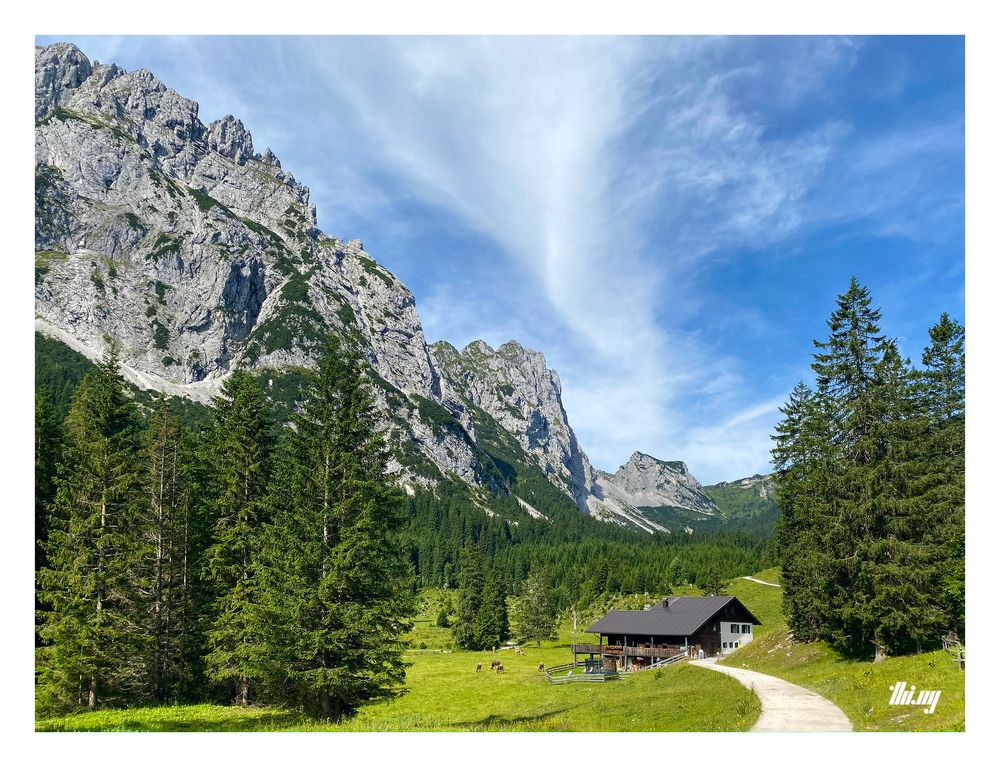
A mountain hut in a peaceful alpine valley, surrounded by meadows with grazing cows, forest and steep rock faces rising up on the LHS. The pass at the end of the valley is visible in the distance. Sunny day with blue sky and some streaky wispy clouds.
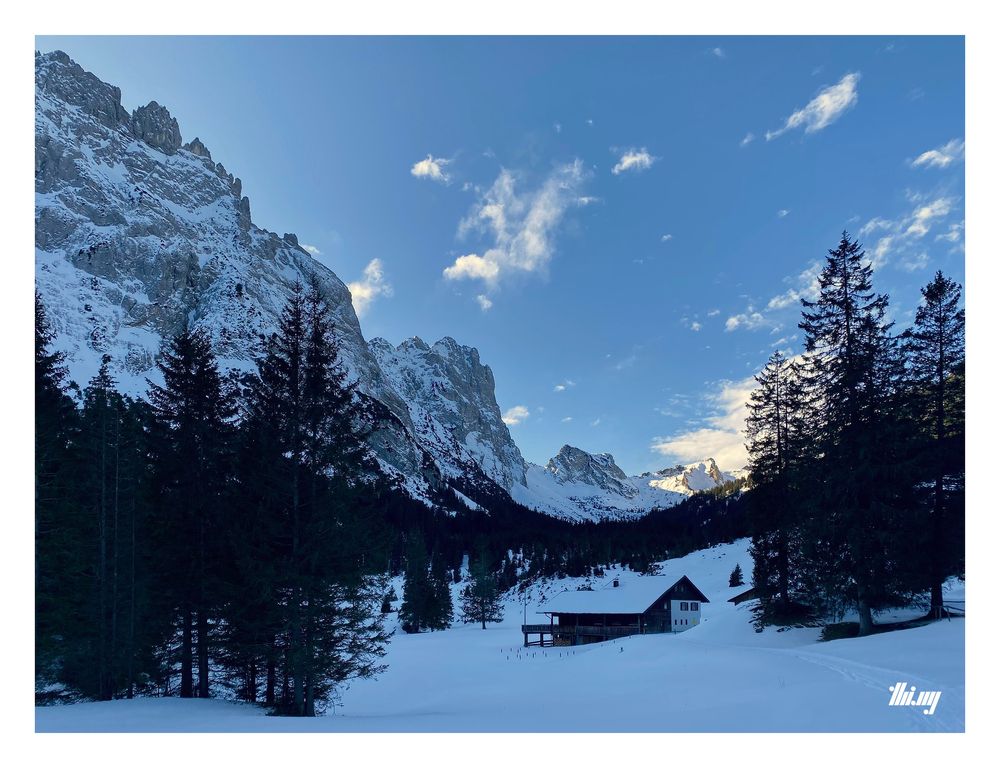
The same mountain hut in mid winter. The valley is covered in ~50cm snow. The nearby trees and forest appear almost black. The pass at the end of the valley is the only place lit by the sun, most of valley is in the shade of the surrounding mountains. Clear day with blue sky and a few isolated clouds.
Exactly one hundred sixty days apart.
(This past Friday vs. early Feb, Raintal)
#SilentSunday #LandscapePhotography #Phtography #Alps #Mountains #Hiking
20.07.2025 07:00 — 👍 32 🔁 4 💬 0 📌 0
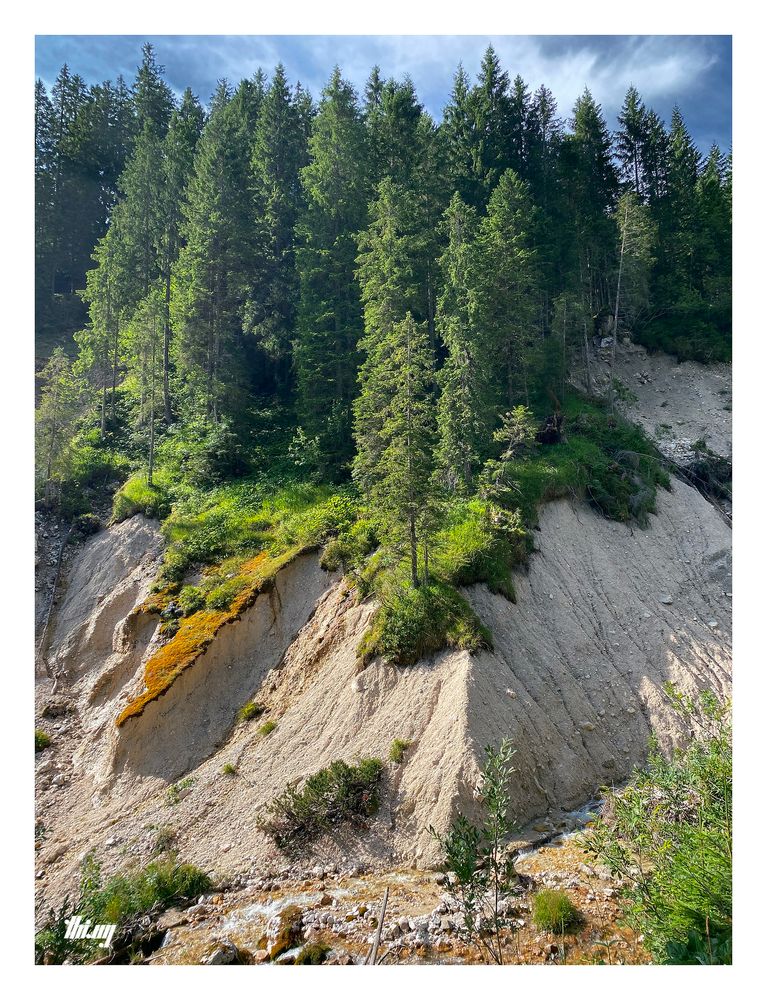
A heavily eroded steep bank of a small mountain creek flowing 20-30m below. Pale grey/beige sand with forest growing on top. Trunks of fallen trees are resting in some of the eroded creases.
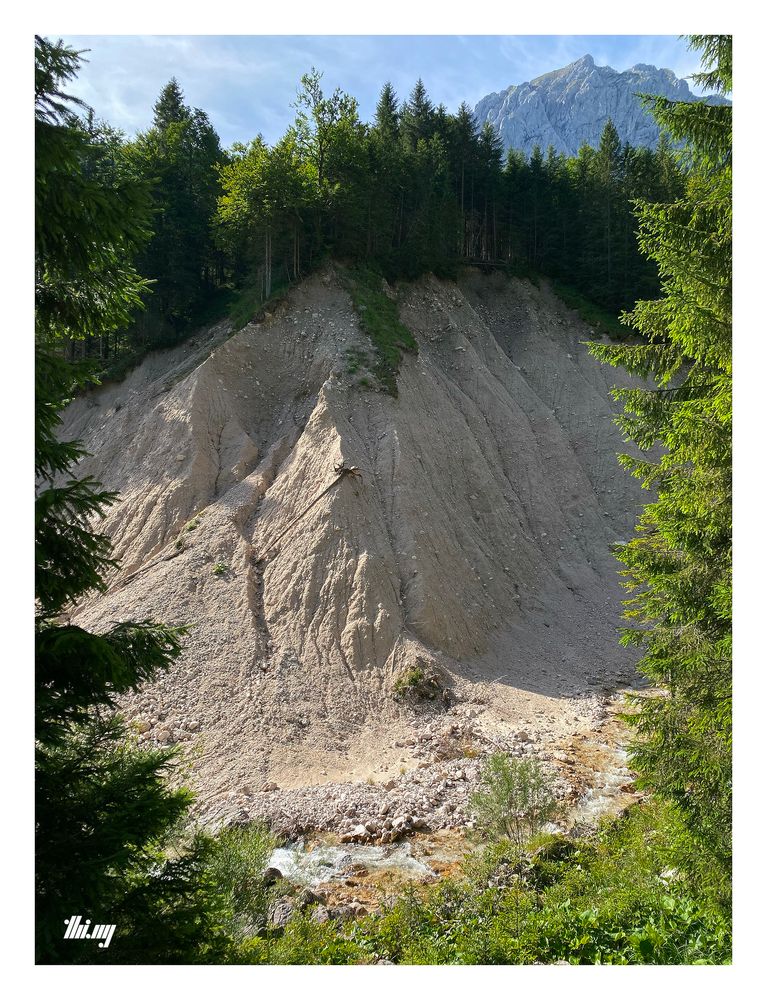
A heavily eroded steep bank of a small mountain creek flowing 20-30m below. Pale grey/beige sand with forest growing on top. Trunks of fallen trees are resting in some of the eroded creases.
Erosion studies from our morning hike yesterday, a ~500m long section of the valley exposing interesting structures and the fragility of life resting on the thin layer of top soil...
#Geology #Erosion #NaturePhotography #Photography #Mountains #Alps
19.07.2025 09:01 — 👍 5 🔁 2 💬 0 📌 0
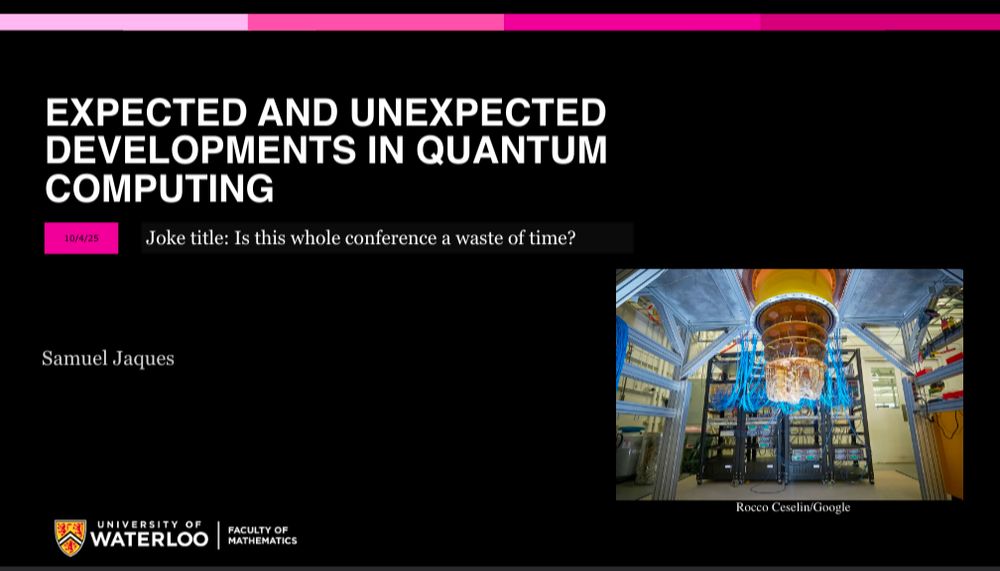
Title slide of the presentation:
EXPECTED AND UNEXPECTED
DEVELOPMENTS IN QUANTUM
COMPUTING
Samuel Jaques
10/4/25 Joke title: Is this whole conference a waste of time?
Rocco Ceselin/Google
If you want to learn more about the current state of #QuantumComputing especially with respect to #QuantumFactorisation, but not only, have a look at these recent slides by Samuel Jaques.
@sten
https://pqcrypto2025.iis.sinica.edu.tw/slides/Invited3.pdf
17.07.2025 06:58 — 👍 0 🔁 2 💬 0 📌 0
Original post on mastodon.thi.ng
"New technologies, when introduced, are typically given names that overstate their capabilities, usually by equating them with existing familiar systems or technological artefacts. For example the first computers in the 1940s and 1950s, often little more than glorified electric adding machines […]
19.07.2025 08:08 — 👍 0 🔁 1 💬 1 📌 0
Original post on mastodon.thi.ng
Memoirs of the CP/M creator released:
“Our father, Gary Kildall, was one of the founders of the personal computer industry, but you probably don’t know his name. Those who have heard of him may recall the myth that he ‘missed’ the opportunity to become Bill Gates by going flying instead of […]
18.07.2025 16:34 — 👍 2 🔁 16 💬 1 📌 0










